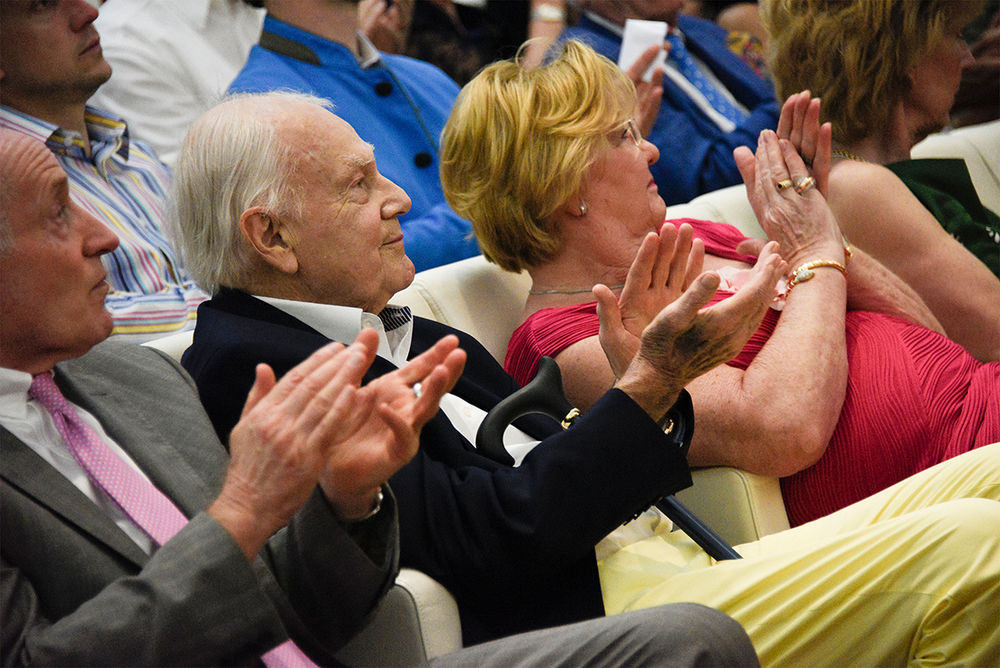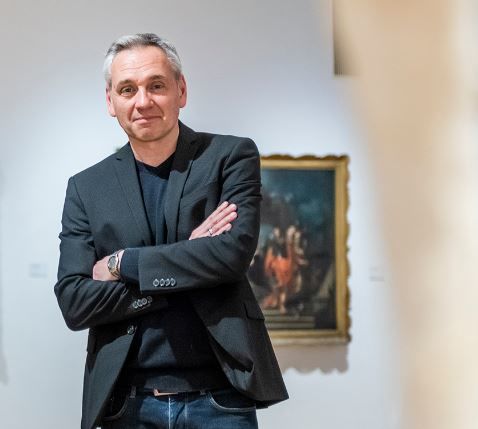28 June 2020 marked the first anniversary of Ferdinand Wolfgang Neess’s donation of his Art Nouveau collection to the Museum Wiesbaden.
It’s already been a year since the exhibition Art Nouveau – Donation F.W. Neess officially opened at Museum Wiesbaden, when Museum Wiesbaden became a centre of Jugendstil art overnight. (‘Jugendstil’ being the German counterpart to Art Nouveau, applied to works created in the German-speaking world.) As well as substantially expanding the collection focus here in Wiesbaden, the donation also contributed to the museum’s increasingly distinctive international profile. Museum Wiesbaden today looms large on the map of Jugendstil art. Alongside the Sprudelhof in Bad Nauheim and the Mathildenhöhe in Darmstadt, the international Art Nouveau and Jugendstil collection brilliantly complements the existing legacy of this period of cultural history and adds lustre to Hessen’s status as a major centre of Jugendstil art. Steeped in the spirit of the 1900 Exposition Universelle in Paris, the Vienna Secession, and the German Reform Movement, Neess’s international collection boasts over 500 objects, forming, qualitatively and quantitively, a comprehensive survey of international Art Nouveau as the last common artistic language.
Let There Be Light
In terms of both style and content, Art Nouveau and Jugendstil drew on forms from the natural world. This makes it ideally suited to bridging the two branches – art and natural history – housed at Museum Wiesbaden. True to the spirit of the period’s artists, we chose to present the largest European private collection of Jugendstil and Symbolist art as a Gesamtkunstwerk, integrating its various components into one coherent artistic whole. Glassware, ceramics, furniture, lamps, and paintings are shown together as a living unity, collectively forming an indivisible synthesis of art and life. The exhibition thus respects Jugendstil’s guiding artistic principles by removing boundaries relating to genre and hierarchy. This style’s radical power of innovation could also be seen in the use of modern electrical technology for artistic ends, with sculptures rendered functional by means of illumination and lamps transformed into glowing glass art. The exhibition therefore pays particular attention to keeping lamps permanently lit and maintaining a play of light in the galleries, which serves to emphasize the special significance Jugendstil accorded to atmospheric lighting.

The Patron and His Bequest
The late collector Ferdinand Wolfgang Neess (1929–2020) would have turned 91 on the day of the exhibition’s anniversary. However, he lives on through his collection. Indeed, the collection itself continues to thrive! The donor’s widow, Danielle Neess, is ardent in her support of the museum. It was through her efforts that, soon after the show’s opening, the museum was able to obtain on permanent loan an original poster by Alfons Mucha, ‘Austria at the World Exposition in Paris’ (1900) and a large-scale painting by Friedrich König, Death and the Maiden (1912). There’s an additional highlight in the form of two works by Agathon Léonard: a table lamp entitled Danseuse à l’écharpe and the sculpture Danseuse aux Cothurnes. Inspired by Neess’s example, other collectors have committed to bequeathing entire collections of glazed ceramics and glassware by Royal Dux and Joh. Loetz-Witwe. Thanks to Ferdinand Wolfgang Neess, Jugendstil now enjoys an established presence in Wiesbaden.

Dr. Peter Forster
Custodian of collections, 12th to 19th century
Translation: Lance Anderson